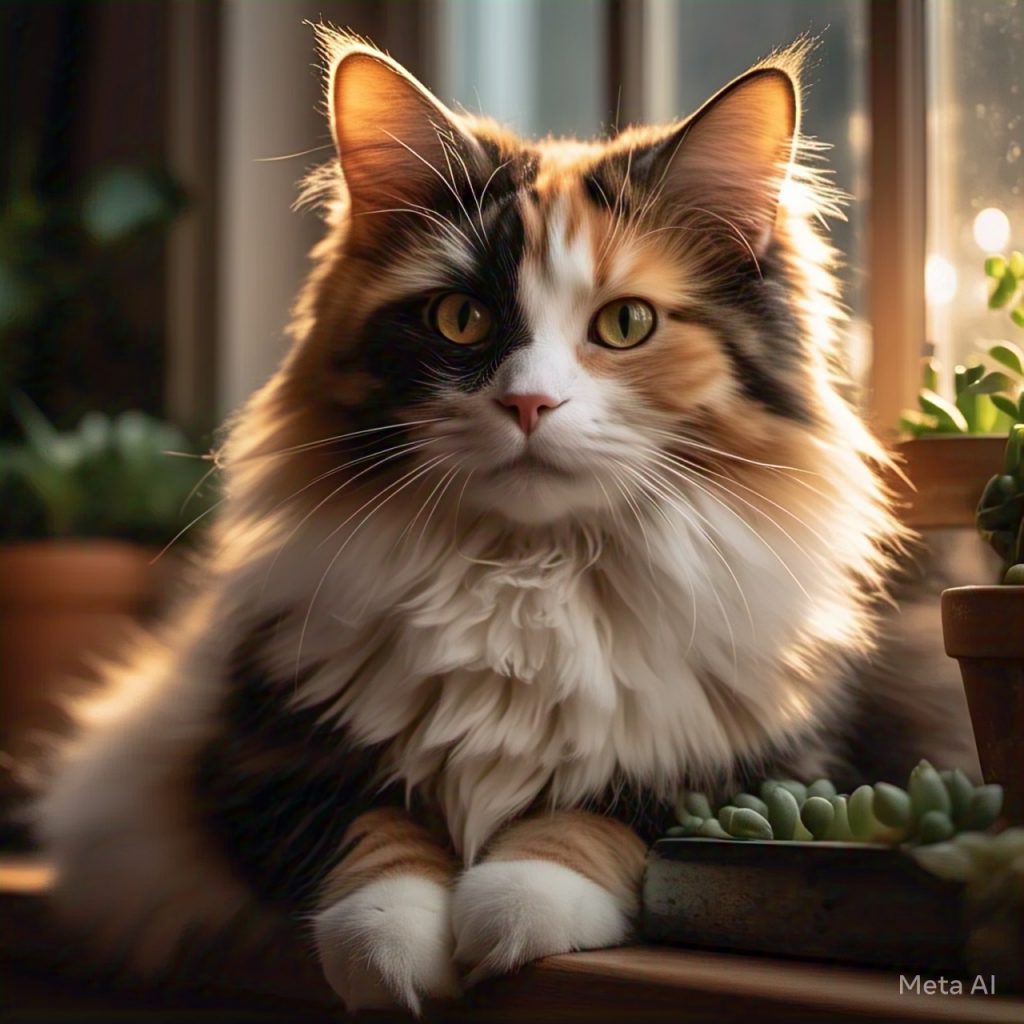Calico cats are beloved for their striking tri-colored coats, which feature a mix of white, orange, and black fur. But have you ever wondered where do calico cats come from? The history of calico cats is as fascinating as their unique appearance. In this article, we’ll explore the calico cats origin, their historical significance, and the temperament of calico cats. Whether you’re a cat enthusiast or simply curious, this guide will provide a comprehensive look at these colorful felines.
What Is a Calico Cat?
Before diving into their origins, let’s clarify what makes a cat a calico. Calico cats are not a specific breed but rather a color pattern that can appear in many breeds. Their coats are characterized by three distinct colors: white, orange, and black. The distribution of these colors can vary, creating unique and eye-catching patterns.
Interestingly, the vast majority of calico cats are female. This is due to the genetics behind their coat colors, which are linked to the X chromosome. Male calico cats are extremely rare and usually sterile.
Calico Cats Origin: Where Do Calico Cats Come From?
The calico origin is not tied to a specific geographic location, as the calico pattern can appear in cats worldwide. However, the history of calico cats is deeply intertwined with human civilization and trade routes.
1. Ancient Egypt
Cats have been revered in ancient Egyptian culture for thousands of years. While there’s no direct evidence that calico cats existed in ancient Egypt, cats with similar coat patterns may have been present. Egyptians valued cats for their ability to control pests and often depicted them in art and mythology.
2. Asia and the Silk Road
The history of calico cats is closely linked to the development of trade routes, particularly the Silk Road. As merchants traveled between Asia, Europe, and the Middle East, they brought cats on board ships to control rodents. Over time, cats with the calico pattern spread across these regions.
- Japan: Calico cats, known as “Mi-ke” (meaning “triple fur”), have a special place in Japanese culture. The Maneki-neko, or “beckoning cat” figurine, is often depicted as a calico and is believed to bring good luck and fortune.
- Turkey: The Turkish Van, a breed known for its love of water, sometimes exhibits the calico pattern. These cats have been around for centuries and are thought to have originated in the Lake Van region.
3. Europe and North America
Calico cats became more widespread in Europe and North America as trade expanded. Sailors and settlers brought cats with them to control pests on ships and in new settlements. Over time, the calico pattern became a common sight in these regions.
The Genetics Behind Calico Cats
The unique coat pattern of calico cats is the result of genetics. Here’s a simplified breakdown:
- X Chromosome: The genes responsible for orange and black fur are located on the X chromosome.
- Female Cats: Female cats have two X chromosomes (XX), allowing them to display both orange and black colors along with white.
- Male Cats: Male cats have one X and one Y chromosome (XY). For a male cat to be calico, he must have an extra X chromosome (XXY), a rare genetic condition that often results in sterility.
This genetic quirk explains why calico cats are almost always female.
The Temperament of Calico Cats
While coat color doesn’t directly determine personality, many owners and enthusiasts believe that calico cats have distinct temperaments. Here are some common traits associated with the temperament of calico cats:
- Feisty and Independent: Calico cats are often described as strong-willed and independent. They know what they want and aren’t afraid to show it.
- Affectionate: Despite their feisty nature, calico cats can be very loving and form strong bonds with their owners.
- Playful: These cats are known for their playful and curious nature, often entertaining themselves with toys or exploring their surroundings.
- Protective: Some owners report that calico cats are particularly protective of their homes and families.
Of course, individual personalities can vary, but these traits are commonly associated with calico cats.
Calico Cats in Culture and Folklore
The history of calico cats is rich with cultural significance. Here are a few examples:
- Japan: As mentioned earlier, calico cats are considered symbols of good luck in Japan. The Maneki-neko figurine is a popular talisman believed to attract wealth and prosperity.
- United States: In the state of Maryland, the calico cat was named the official state cat in 2001 due to its resemblance to the state bird (the Baltimore oriole) and the state insect (the Baltimore checkerspot butterfly), both of which have orange and black colors.
- Ireland: In Irish folklore, calico cats are sometimes associated with fairies and magical beings.
Fun Facts About Calico Cats
- Rare Males: Only about 1 in 3,000 calico cats is male, and most are sterile.
- Not a Breed: Calico refers to the coat pattern, not a specific breed. Many breeds, including the American Shorthair, Persian, and Japanese Bobtail, can have calico coloring.
- Good Luck Charm: In many cultures, calico cats are believed to bring good fortune.
Conclusion: The Fascinating World of Calico Cats
From their mysterious calico origin to their unique genetics and cultural significance, calico cats are truly one of a kind. Whether you’re drawn to their striking appearance or their spirited personalities, there’s no denying the charm of these tri-colored felines.
Understanding where do calico cats come from and their place in history adds another layer of appreciation for these beautiful animals. Whether you’re a proud owner or simply an admirer, the history of calico cats is a testament to their enduring appeal.

